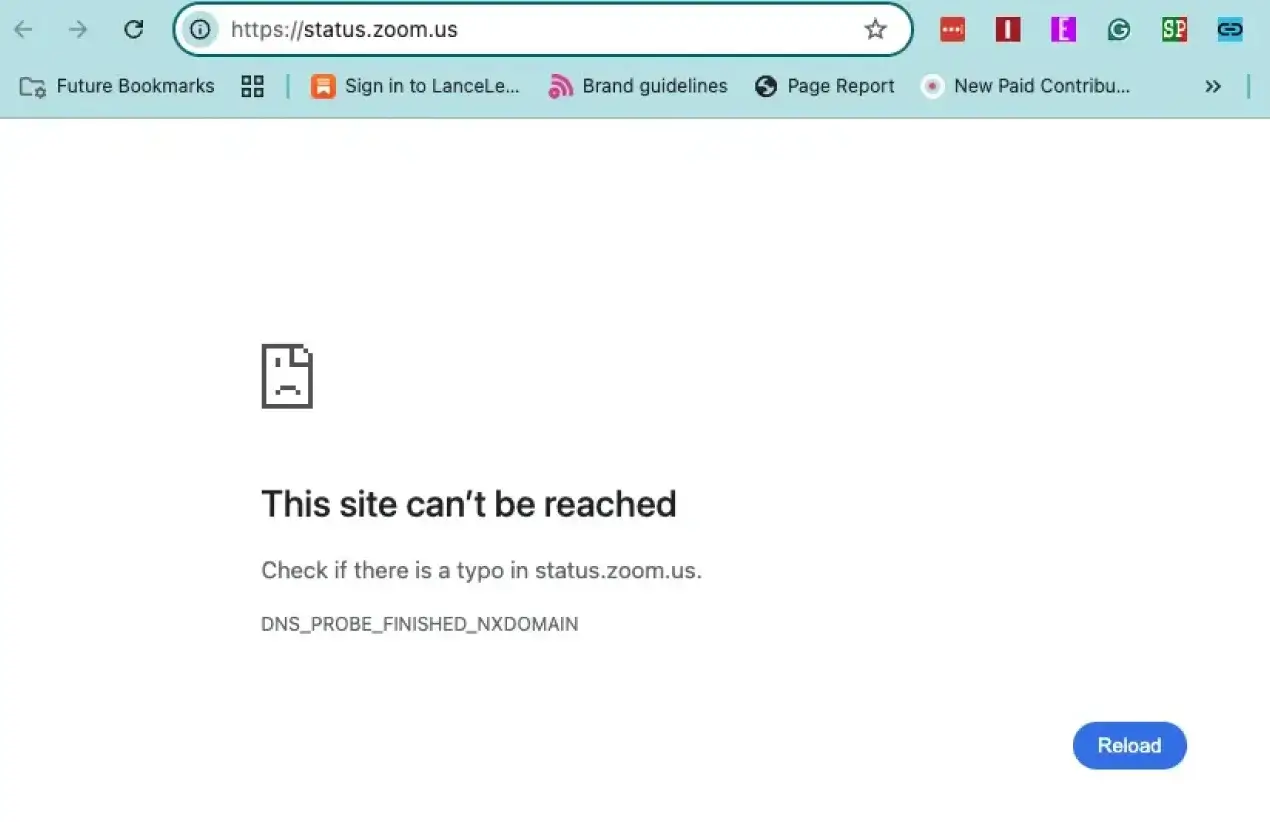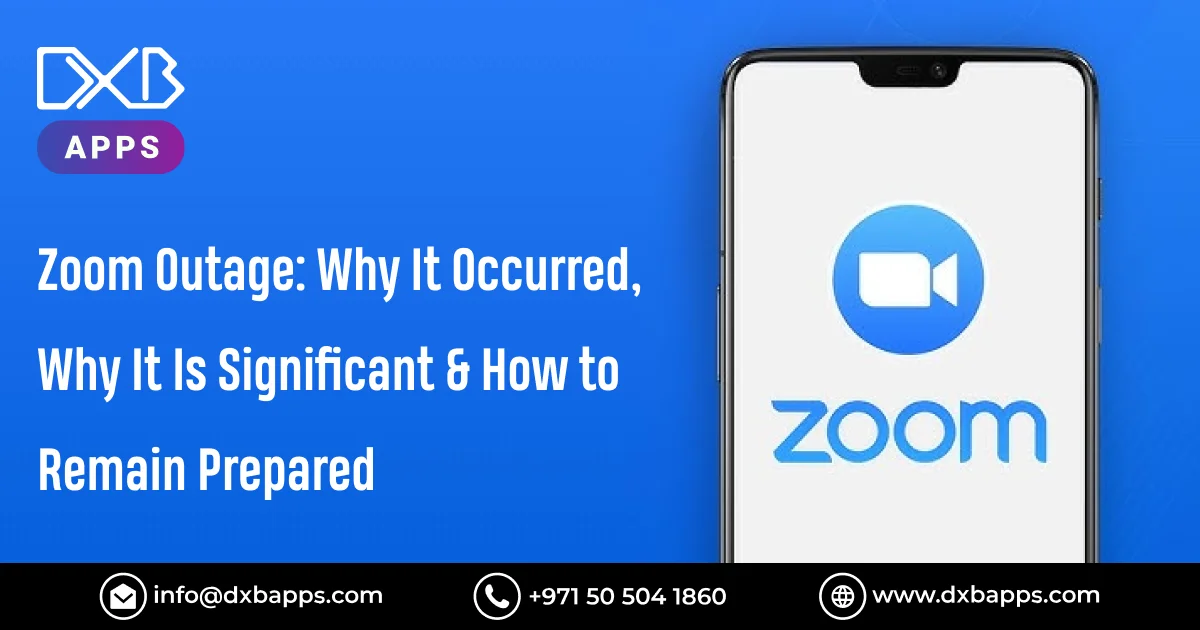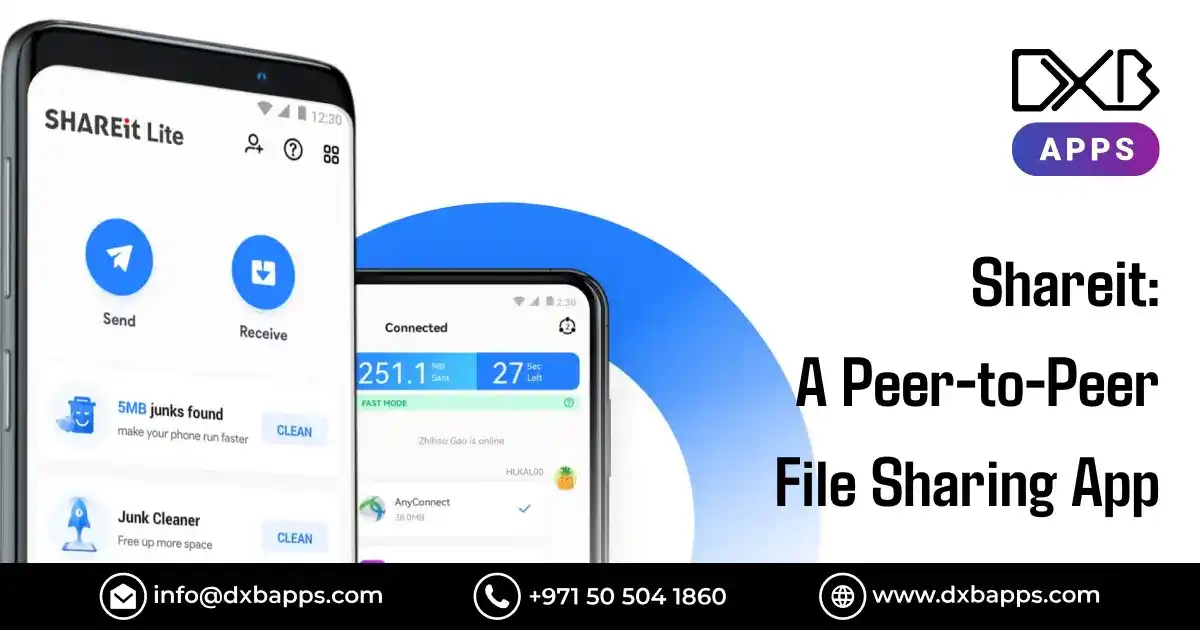The current norm of remote work and virtual collaboration makes video conference technology vulnerable enough to provoke major disruptions across worldwide industries. Users worldwide faced frustration after a global outage occurred on the major virtual meeting platform, Zoom.
Customers started notifying Zoom app of connection problems with its video conferencing services and app on Friday afternoon at precisely 3:01 p.m. ET. The maximum quantity of complaints about the disruption recorded by Downdetector exceeded 67,000 users. The outage highlighted the importance of businesses responding promptly to technology issues, as evidenced by Zoom Communications' immediate acknowledgment of the fault and initiation of the repair process. The incident highlighted the significant dependence on digital systems and their associated risks.

Zoom Down: What Actually Occurred?
Zoom subsequently conceded that the outage resulted from "domain name resolution issues with the zoom.us domain," which caused several services to crash simultaneously. The fault was resolved within hours, but the brief blackout had already cut short thousands of organized and in-process meetings, including business conferences, classes, and telemedicine sessions.
Error code 503 was repeatedly encountered during the outage a code that generally indicates a server-side problem, where the system is overwhelmed or being serviced. Although Zoom reported that the issue had been fixed, speculation about the cause of the problem quickly spread through social media.
Was It a Cyberattack?
DarkStorm, the cyber gang, emerged soon after the Zoom break to declare they conducted a DDoS (Distributed Denial-of-Service) attack. A server becomes unusable for serving customers through a DDoS attack because the attack overwhelms the site with unmanageable internet traffic.
Security experts are now expressing concerns following the revelation that the company failed to issue an official statement about the attack, but the responsible group, DarkStorm, stepped forward. The impact of brief outages on Zoom poses a significant business risk for companies that rely on uninterrupted communication, as the platform attracts over 300 million daily meeting participants.
"We do work on USA platforms as we said," DarkStorm speculated on X (formerly Twitter).
Whether or not a DDoS attack was the original motivation, this outage serves as a warning to the challenges that large digital platforms face in protecting their services.
What Is a DDoS Attack and Why Should You Care
A Distributed Denial-of-Service (DDoS) attack interrupts server, service, and network operations by overwhelming Internet pathways with excessive traffic volumes. A single-source DoS attack originates from a single source, whereas DDoS attacks utilize numerous sources connected through controlling machines known as botnets.
The goal? To drain server resources, making it impossible for good people to use them effectively. Such an attack is hard to avert and even harder to track because of its distributed nature.
Organizations, particularly those that provide online services, should always have countermeasures—in the form of firewalls, load balancers, and sophisticated traffic filters—to cushion the impact of such attacks. Zoom, as a cutting-edge technology platform, is now facing further tightening of its defenses.
How to Stay Prepared for Online Disruptions
The Zoom failure is a sign of warning sign for businesses and customers worldwide. The more we transact online, the more ready we need to be for failovers. A few tips in order to help you stay a step ahead follows:
- Keep an alternate platform (such as Microsoft Teams or Google Meet) as an ace in your sleeve.
- Back up meetings, particularly ones that are business- or health-care-critical.
- Train personnel on how to act during a blackout.
- Invest in secure, well-designed, scalable, and robust applications.
DXB APPS: Creating High-Performance Mobile Apps in Dubai
While designing high-power, secure, and strong digital platforms, DXB APPS is a UAE-based top-ranked mobile app development company. Backed by a robust team of skilled mobile app developers, DXB APPS excels at designing feature-rich, secure mobile apps for multiple industries, including e-commerce, fintech, healthcare, and logistics.
Headquartered in Dubai, backed by mobile app development Dubai capabilities, DXB APPS unites cutting-edge technology and user-focused design to offer hassle-free digital solutions. Whether you are a startup developing your first application or an organization looking to expand your digital footprint, DXB APPS provides comprehensive solutions tailored to your objectives.
If you need app development Abu Dhabi solutions, DXB APPS is your best bet to create future-proof, solid apps.
Final Thoughts
Modern communication relies heavily on Zoom outage; yet, the recent service disruption demonstrates that even the most advanced platforms remain vulnerable to system failures. The Zoom service disruption highlights the importance of businesses implementing multiple communication tools, securing their systems, and developing plans to address future system failures.
Most businesses use Zoom as their foundation for virtual operations today; however, this incident may prompt fundamental changes in their digital continuity and cybersecurity strategies. Technological advancements necessitate the update of our security protocols, ensuring that our connections and security remain effective.














